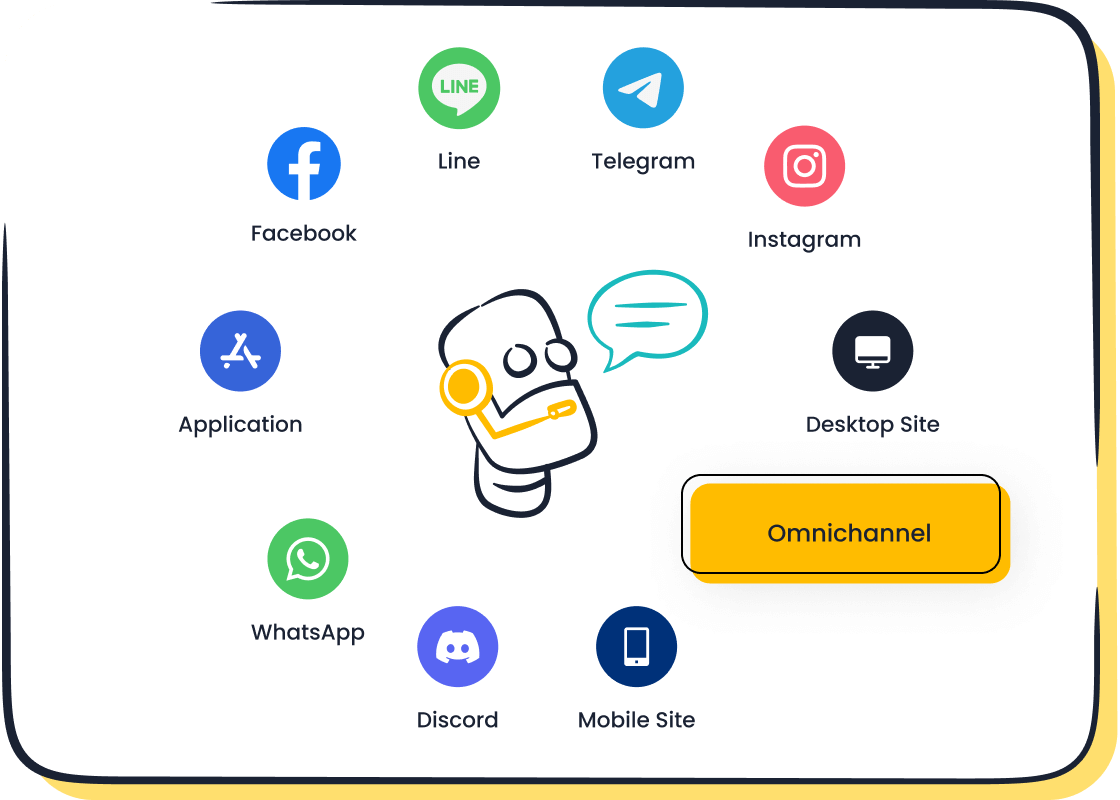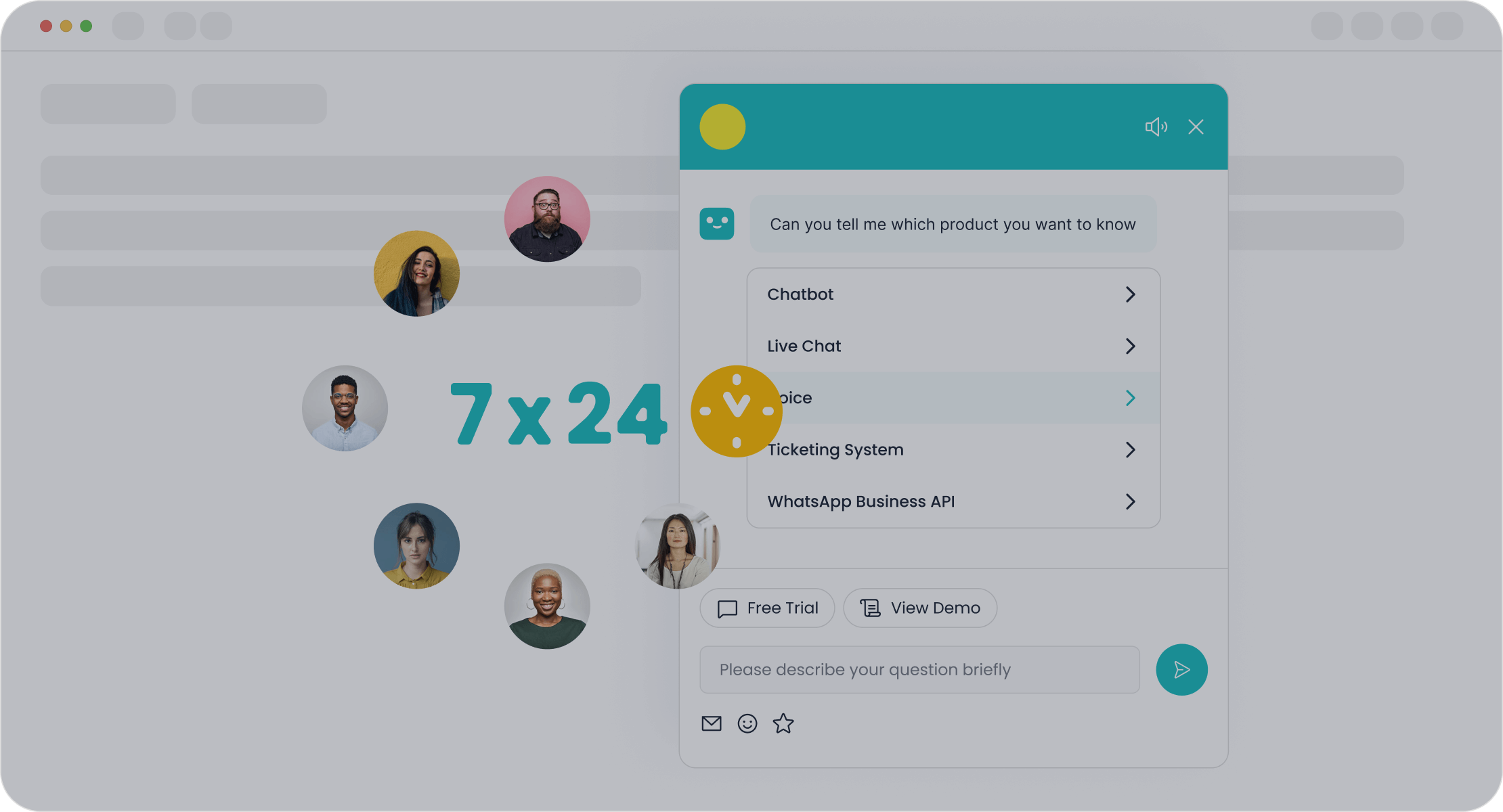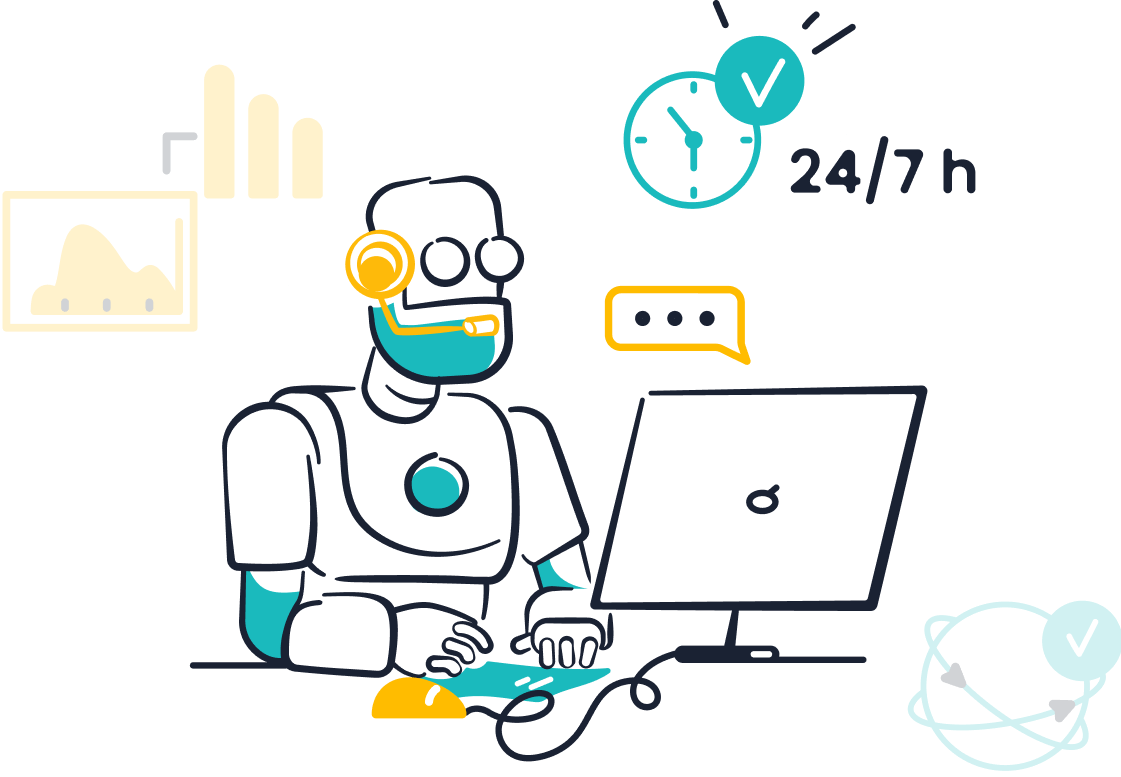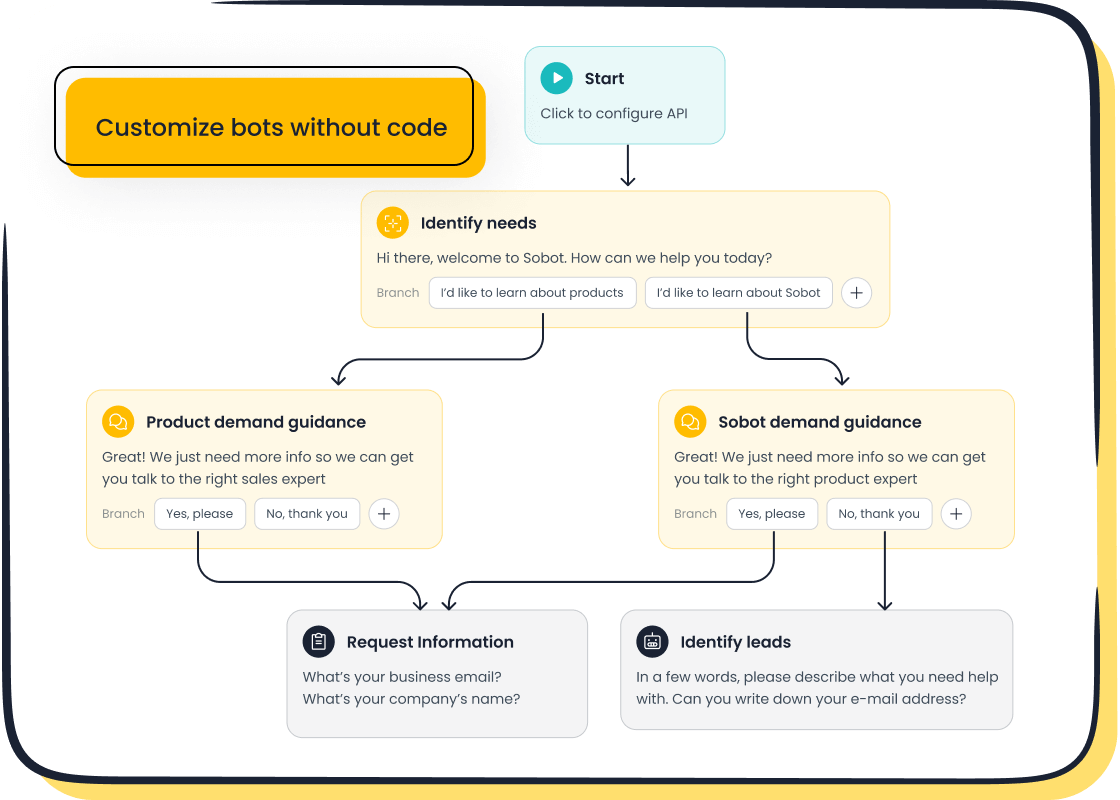Steps to Create Customer Profiles for Product Management

Customer profiles play a vital role in helping you understand your audience better. By analyzing customer behavior, preferences, and demographics, you can align your products with their needs. This alignment drives higher satisfaction, loyalty, and retention rates. For example, companies like Netflix and Amazon use customer profiles to personalize recommendations and improve decision-making, resulting in enhanced engagement and increased sales.
| Metric | Impact on Product Management Success |
|---|---|
| Customer Satisfaction | Higher satisfaction leads to increased customer loyalty. |
| Revenue | Products aligned with customer needs drive revenue growth. |
| Retention Rate | Better alignment with customer profiles improves retention. |

Sobot offers tools like its AI-powered Chatbot to streamline Customer Profile Management. The Chatbot collects and analyzes data efficiently, helping you create actionable profiles that improve customer interactions and operational efficiency.
Understanding Customer Profiles and Their Importance
What Are Customer Profiles?
Definition and key components of customer profiles.
Customer profiles are detailed representations of your target audience based on real data. They include key attributes such as demographics, behaviors, preferences, and pain points. For example, a customer profile for an online retailer might include age, shopping habits, preferred payment methods, and common challenges like delayed deliveries. Unlike raw customer data, which is often scattered and unstructured, customer profiles organize this information into actionable insights. These profiles help you understand your audience better and make informed decisions.
How customer profiles differ from raw customer data.
Raw customer data consists of unprocessed information collected from various sources, such as website visits, purchase histories, or survey responses. While this data is valuable, it lacks context and structure. Customer profiles transform this raw data into meaningful narratives. For instance, instead of just knowing that a customer purchased a product, a profile might reveal why they chose it and what factors influenced their decision. This structured approach allows you to focus on creating solutions that address specific customer needs.
Why Are Customer Profiles Important in Product Management?
Benefits such as improved product-market fit and customer satisfaction.
Customer profiles play a crucial role in achieving product market fit. They ensure your product features align with customer needs and preferences. For example, understanding that your audience values eco-friendly packaging can guide your product design. Profiles also help you prioritize features that maximize value, improving customer satisfaction. Additionally, they inform marketing strategies, enabling you to craft messages that resonate with your audience. This alignment enhances customer loyalty and drives revenue growth.
Role of customer profiles in aligning marketing, sales, and support strategies.

Customer profiles act as a unifying tool across departments. Marketing teams use them to position products effectively, while sales teams tailor their pitches to different customer segments. Support teams benefit by understanding customer pain points, enabling them to provide personalized assistance. For instance, Sobot's AI-powered Chatbot uses customer profiles to deliver tailored support, improving resolution rates and customer experiences. This alignment ensures a seamless journey for your customers, from initial contact to post-purchase support.
Customer Profiles vs. Customer Personas
Key Differences
Data-driven nature of customer profiles vs. semi-fictional personas.
Customer profiles and personas serve distinct purposes in understanding your audience. Customer profiles rely on real data, such as demographics, purchase history, and behavior patterns. They provide a factual, quantitative view of your audience. For example, a customer profile might reveal that 70% of your buyers are aged 25-34 and prefer online shopping. In contrast, customer personas are semi-fictional representations. They focus on motivations, goals, and challenges, often adding narrative elements to humanize the data. While profiles answer "who" your customers are, personas explore "why" they act the way they do.
Use cases for customer profiles and personas in product management.
Both tools play valuable roles in product management. Customer profiles excel in data-driven tasks like audience segmentation and personalized marketing. For instance, you can use profiles to identify high-value customers and tailor campaigns to their preferences. Personas, however, shine in creative processes. They help you empathize with your audience, guiding user experience design and storytelling. Combining both approaches can provide a comprehensive understanding of your customers.
Choosing Between Profiles and Personas
Scenarios where customer profiles are more effective.
Customer profiles work best in scenarios requiring precise, data-backed decisions. For example, they enable you to craft targeted marketing campaigns by analyzing customer needs. They also support personalized customer service, as seen with Sobot's AI-powered Chatbot. By leveraging profiles, the Chatbot delivers tailored interactions, improving satisfaction. Additionally, profiles inform product development by identifying specific customer pain points. Businesses can also use them for operational decisions, such as offering perks to frequent buyers.
Scenarios where personas are better suited.
Personas are ideal for tasks requiring a human touch. They help you design user-friendly interfaces by focusing on customer motivations and behaviors. For example, a persona might represent a busy parent who values convenience, guiding you to create time-saving features. Personas also aid in storytelling, helping you craft relatable marketing messages. While less data-driven, they foster empathy, making them invaluable for creative and design-focused projects.
Step-by-Step Guide to Creating Customer Profiles
Step 1: Identify Your Ideal Customer Profile
Define your target audience based on business goals.
To create an effective customer profile, start by identifying your ideal customer. This process begins with analyzing customer research data to pinpoint individuals who show a clear need and desire for your product. Focus on aligning this target audience with your business goals. For example, if your goal is to expand into eco-conscious markets, your ideal customer might prioritize sustainability in their purchasing decisions. Summarize these insights into a one-page document that highlights key attributes such as age, location, and challenges. This document serves as a foundation for understanding your target market and tailoring your strategies accordingly.
Segment customers by demographics, behavior, and needs.
Segmentation helps you categorize customers into meaningful groups. Use methods like needs-based segmentation to identify pain points or value-based segmentation to focus on financial contributions. Behavioral segmentation, which examines customer actions, can reveal patterns like frequent purchases or engagement with specific features. Psychographic segmentation goes deeper, exploring values and motivations. For instance, a customer transitioning from college to homeownership may shift their preferences, requiring updated segmentation. These approaches ensure your ideal customer profile reflects diverse and evolving customer behaviors.
Step 2: Gather and Analyze Customer Data
Use tools like Sobot's Chatbot for data collection and analysis.

Efficient data collection is crucial for building accurate customer profiles. Tools like Sobot's AI-powered Chatbot streamline this process by gathering data from customer interactions across multiple channels. The Chatbot operates 24/7, collecting behavioral and attitudinal data while reducing manual effort. For example, it can track customer queries, preferences, and feedback, providing actionable insights. This automation not only saves time but also ensures data consistency, helping you understand customer behavior more effectively.
Leverage surveys, interviews, and analytics platforms.
Surveys and interviews offer valuable qualitative data, revealing customer sentiments and motivations. Combine this with quantitative data from analytics platforms to gain a comprehensive view. For instance, website analytics can show which products attract the most attention, while surveys can explain why customers prefer them. Integrating these sources ensures a balanced approach to customer research. Always store data securely to maintain trust and comply with regulations.
Step 3: Map the Customer Journey
Visualize customer interactions with your product or service.
Mapping the customer journey helps you understand how customers interact with your brand. Divide the journey into stages like pre-service, service, and post-service. Use tools such as Miro or UXpressia to create visual maps that highlight touchpoints and communication channels. For example, a map might show how a customer discovers your product through social media, makes a purchase on your website, and seeks support via live chat. This visualization provides clarity on customer experiences.
Identify pain points and opportunities for improvement.

Analyzing the customer journey reveals pain points that hinder satisfaction. For instance, long response times during the support phase may frustrate customers. Addressing these issues can improve retention and loyalty. Sobot's Chatbot can assist by providing instant responses, reducing wait times, and enhancing the overall experience. Additionally, look for opportunities to delight customers, such as offering personalized recommendations or proactive support.
Step 4: Document and Visualize Customer Profiles
Create detailed profiles with actionable insights.
To make customer profiles effective, you need to ensure they are rich in actionable insights. Start by collecting comprehensive customer feedback to understand their needs, experiences, and preferences. Blend this direct feedback with indirect signals from sources like social media interactions or customer support logs. For example, if customers frequently mention delayed responses in support chats, this insight can guide improvements in your service strategy. Use customer data platforms to unify and analyze this information, creating profiles that reflect your ideal customer’s pain points and goals. This approach ensures your profiles are dynamic and ready for real-world application.
Use templates or tools to make profiles accessible to teams.
Templates and tools simplify the process of documenting customer profiles and make them accessible to your team. Consider using versatile templates tailored to your target market, such as Retail Customer Profile or B2B Decision Maker Profile. These templates provide structured formats for gathering essential customer data, including demographics, behaviors, and preferences. Tools like Sobot’s Chatbot can also assist by collecting and organizing data efficiently. By using these resources, you can create profiles that are easy to share and understand across departments, ensuring alignment in strategies and decision-making.
Step 5: Validate and Update Profiles
Test profiles in real-world scenarios.
Testing your customer profiles in real-world scenarios helps you verify their accuracy and relevance. Begin by validating your ideas early to minimize the cost of changes. For instance, use your profiles to design a marketing campaign and measure its effectiveness. Pay attention to unexpected insights, as they can challenge assumptions and reveal new opportunities. Platforms like Sobot’s Chatbot can streamline this process by gathering real-time feedback during customer interactions. Observing customer behavior during these tests provides valuable data for refining your profiles.
Regularly update profiles to reflect changing customer behaviors.
Customer behavior evolves over time, making it essential to update your profiles regularly. Schedule periodic reviews to incorporate new data from surveys, analytics, and customer interactions. For example, if your ideal customer shifts preferences due to market trends, update their profile to reflect these changes. Continuous iteration ensures your profiles remain accurate and actionable, leading to improved customer retention and satisfaction. By keeping profiles current, you can stay ahead of customer needs and maintain a competitive edge.
Practical Tips for Effective Customer Profile Management
Best Practices for Profile Creation
Involve cross-functional teams for diverse perspectives.
Creating effective customer profiles requires input from multiple departments. Marketing teams can provide insights into customer acquisition trends, while sales teams understand buyer behavior during the decision-making process. Support teams contribute by identifying common pain points. This collaboration ensures your profiles reflect a deep understanding of customers across all touchpoints. For example, combining demographic, psychographic, and behavioral data helps you segment customer profiles effectively. Tools like Sobot's Chatbot can unify this data, offering a comprehensive view of customer interactions.
Focus on actionable insights rather than excessive details.
Customer profiles should prioritize actionable insights over unnecessary complexity. Instead of overwhelming your team with excessive details, focus on key attributes like customer segments, preferences, and behaviors. For instance, understanding that a segment values eco-friendly products can guide product design and marketing strategies. Actionable profiles improve retention by aligning your offerings with customer needs, ultimately enhancing product market fit.
Common Pitfalls to Avoid
Relying on assumptions instead of data.
Assumptions can lead to inaccurate profiles, which may harm your strategies. Always base profiles on real customer data collected through surveys, analytics, and tools like Sobot's Chatbot. For example, assuming all customers prefer online shopping might exclude those who value in-store experiences. Data-driven profiles ensure you address actual customer needs, reducing customer acquisition costs and improving retention.
Neglecting to update profiles over time.
Customer behavior evolves, making regular updates essential. Failing to revise profiles can result in outdated strategies that miss current trends. Schedule periodic reviews to incorporate new data and insights. For example, if a customer persona shifts due to changing market conditions, updating their profile ensures continued relevance. This practice supports customer-centricity and strengthens your product market fit.
Tools and Resources for Customer Profile Management

How Sobot's Chatbot can streamline data collection and analysis.
Sobot's AI-powered Chatbot simplifies customer profile management by automating data collection and analysis. It operates 24/7, gathering customer data from interactions across multiple channels. For example, the Chatbot tracks customer queries and preferences, providing actionable insights that improve retention. Its multilingual capabilities and no-coding setup make it accessible for businesses of all sizes. By leveraging this tool, you can create accurate profiles that enhance customer satisfaction and operational efficiency.
Recommended templates and frameworks for documenting profiles.
Templates and frameworks make documenting customer profiles easier. Options like the ClickUp CRM Template or the B2B Customer Profile Template by Forbes provide structured formats for organizing customer data. These templates include fields for demographics, behaviors, and preferences, ensuring consistency across teams. For example, a Retail Customer Profile template might focus on shopping habits and preferred payment methods. Using these resources streamlines profile creation, helping you maintain a deep understanding of customers.
Applications of Customer Profiles in Product Management
Enhancing Product Development
Designing features that address customer pain points.
Customer profiles provide a clear understanding of your audience's needs and challenges. By analyzing these profiles, you can design features that directly address pain points. For example, small and medium enterprises (SMEs) often struggle with limited IT infrastructure and high costs. A simplified, user-friendly platform with seamless integration can solve this issue. Similarly, health-conscious individuals may face limited access to healthcare. Offering on-demand consultations and efficient scheduling can meet their needs.
| Ideal Customer | Pain Point | Feature Designed |
|---|---|---|
| SMEs | Limited IT infrastructure, high costs | Simplified, user-friendly platform |
| Health-conscious individuals | Limited access to healthcare | On-demand consultations and scheduling |
Prioritizing product roadmaps based on customer needs.
Customer profiles help you prioritize product development by highlighting what matters most to your audience. For instance, if your profiles reveal that millennials value personalized offerings, you can focus on advanced data analytics to deliver tailored recommendations. This approach ensures your roadmap aligns with customer expectations, improving satisfaction and retention.
Aligning Marketing and Sales Strategies
Crafting targeted marketing campaigns.
Customer profiles enable you to craft marketing campaigns that resonate with your audience. By understanding customer demographics and behaviors, you can create personalized messages. For example, targeted email campaigns can notify customers about discounts on products they previously viewed. This strategy increases engagement and conversion rates. Additionally, live chat triggers based on customer behavior, such as spending time on a product page, can encourage immediate action.
Personalizing sales strategies for different customer segments.
Sales strategies become more effective when tailored to specific customer segments. Profiles allow you to identify preferences and buying behaviors. For example, you can recommend products based on browsing history or previous purchases. Customized calls to action, such as "Complete your purchase today for free shipping," can also enhance conversions. These personalized approaches build trust and drive sales.
Improving Customer Support and Success
Using Sobot's Chatbot to deliver tailored customer support.

Sobot's AI-powered Chatbot uses customer profiles to provide personalized support. It operates 24/7, addressing common queries and offering solutions based on customer data. For example, if a customer frequently asks about delivery times, the Chatbot can proactively provide updates. This tailored approach improves resolution rates and enhances the overall experience.
Proactively addressing customer challenges to boost satisfaction.
Customer profiles allow you to anticipate and resolve issues before they escalate. Documenting pain points helps you create resources like FAQs or tutorials. Automated tools, such as Sobot's Chatbot, can engage proactively by offering solutions based on past interactions. For instance, if a customer often struggles with account setup, the Chatbot can guide them step-by-step. These proactive measures increase satisfaction and loyalty.
Customer profiles are essential for product management success. They help you align product features with customer needs, prioritize development, and improve marketing communication. For example, profiles guide decisions about features, user interface design, and pricing strategies. This structured approach ensures your products resonate with your audience.
Tools like Sobot's AI-powered Chatbot simplify customer profile management. By automating data collection and analysis, the Chatbot enhances efficiency and accuracy. Many companies have achieved remarkable results using such tools:
| Company | Improvement Metrics |
|---|---|
| Mico App | 95% customer satisfaction, personalized VIP services |
| Unknown Company | 97% CSAT score, 22.2% of questions answered autonomously |
| Unknown Company | 85% problem resolution rate, 99% customer happiness |
| Unknown Company | 35% increase in sign-off rate, 40% increase in COD collection rate |
By leveraging these tools, you can create actionable profiles that drive customer satisfaction and operational efficiency. Start optimizing your customer profile management today!
FAQ
What is the difference between customer profiles and customer personas?
Customer profiles rely on real data like demographics and behaviors, while personas are semi-fictional and focus on motivations. For example, a customer profile might show 60% of buyers prefer online shopping, while a persona could describe "Emma," a busy mom who values convenience.
How can Sobot's Chatbot help with customer profile creation?
Sobot's AI-powered Chatbot collects and analyzes customer data 24/7. It tracks interactions, preferences, and feedback across channels. For instance, it can identify frequent queries, helping you understand customer pain points and create actionable profiles. Learn more here.
Why should you update customer profiles regularly?
Customer behaviors and preferences change over time. Regular updates ensure profiles stay accurate and actionable. For example, market trends might shift customer priorities, like preferring eco-friendly products. Updating profiles helps you stay aligned with their evolving needs.
What tools can you use to document customer profiles?
Templates and tools simplify profile documentation. Use structured templates like B2B Customer Profile formats. Sobot's Chatbot also organizes data efficiently, making profiles accessible to teams. This ensures consistency and alignment across departments.
How do customer profiles improve product management?
Customer profiles guide product decisions by highlighting needs and pain points. For example, if profiles show customers value affordability, you can prioritize cost-effective features. This alignment improves satisfaction, retention, and revenue growth.
See Also
A Comprehensive Guide to Omnichannel Contact Center Setup
How to Effectively Utilize Shopify Live Chat Support
Essential Strategies for Live Chat Success in Retail
